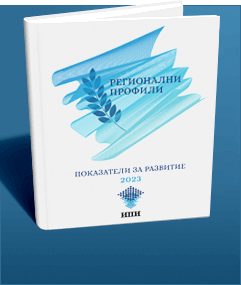The minimum wage – between populism and reality
As we approach the end of each year, the minimum wage becomes a subject of dispute and political discourse once again. Popular ideas this year include raising it (to 780 BGN), raising it significantly (to 850 BGN), and a slightly newer proposal - making it 50% of the average wage in the country (around 870 BGN based on Q3 2022 data). In previous years, in addition to the mentioned proposals, there were more complex suggestions - setting it through a set of indicators, indexing it with others, making it different across regions, sectors, professions, and so on.
The National Revenue Agency (NRA) does not provide official statistics on the number of people working for the minimum wage, but according to government officials and parliamentary discussions, it amounts to around half a million people. Some of them receive additional cash payments (probably in the hotel industry, transportation, and construction), and raising the minimum wage will simply pour more money into the treasury and social security systems. Another part is employed by the state and municipalities (mainly in cleaning services), and wages there will need to be increased in any case. However, a third part actually receives only that much in the private sector, and employers will have to raise wages (including for other workers or at least those who earn slightly above the minimum wage) or reduce their workforce, or they too will resort to "under-the-table" payments.
For high-paying sectors, positions, and regions where the generated value-added is higher, none of the proposed increases will have a significant impact. However, the situation varies greatly in different parts of the country and in different industries.
Data for the third quarter of 2022 show that wages are lowest in the Kyustendil, Blagoevgrad, and Haskovo regions, where the current minimum wage is over 60% of the average wage. If the minimum wage is raised to 50% of the average wage for the country, its real share in these regions will increase to nearly 75% of the average wage. It is clear that some low-skilled workers will not remain employed, and more doors will be closed for the unemployed. At the same time, in the capital city - the region with the highest average wage - the share of the minimum wage will increase from 30% to 36%.
The situation is also significant in different sectors. In the hotel and restaurant, water supply and sewage, construction, and agriculture sectors, the share of the minimum wage is above 50%, reaching 66% in hotels and restaurants. If the minimum pay is raised to 50% of the average wage, its share in these sectors will be over 65% (up to 82% in hotels and restaurants). In the ICT sector, this increase will change the share of the MW from 17% to 21%.
If we only consider the payment of unskilled labor, we can see at least 80 thousand individuals in agriculture, wood processing, food and garment industries, construction, and various domestic, communal, and support services receiving an average of about 10% above the minimum wage in 2021. Additionally, we can add another 40 thousand individuals in the trade sector alone, who receive slightly over 20% above the minimum wage on average.
On the one hand, different sectors produce different value-added, concentrate workers with different qualifications, and have different labor organizations, which means significant differences in wages. On the other hand, the regional map shows a large gap between different regions. Naturally, we should strive for cohesion and high incomes for everyone, but in the name of populism, we cannot ignore reality.

